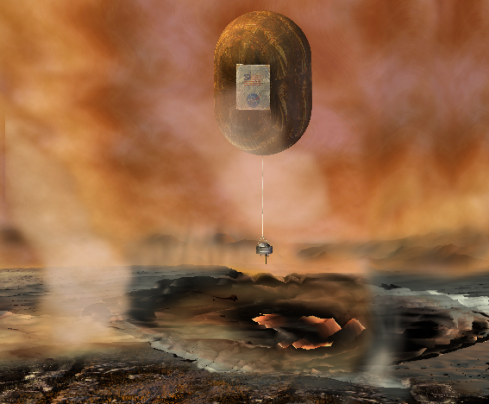Welcome back NASA! Since the United States Congress reached a (somewhat pathetic) fig leaf deal to fund the Federal government yesterday, the national space agency is back in business! The NASA website is up and running. Furloughed astrophysicists have stopped sending their resumes to useless (but extremely lucrative) financial firms and are again exploring the fundamental nature of the universe.

He could be working on a warp drive…or he could be devising toxic real estate loan derivatives in order to plunder your retirement fund–you decide!
To celebrate what I regard as one of the–if not the most–important things that humankind is working on, here is a list of current NASA projects which you can start looking forward to again:
BARREL is a series of about 40 super high altitude balloons designed to study the Van Allen radiation belts (which serve as a sort of force field that keeps Earth’s atmosphere from being destroyed).
Solar Probe+ is a robotic spacecraft designed to fly faster than any human made object to the outer corona of the sun and study our beloved star directly.
MAVEN is an orbital planetary satellite designed to orbit Mars and analyze its atmosphere.
OSIRIS-Rex is a probe designed to visit a 500 meter long carbonaceous asteroid and return a sample to Earth for study.
The James Webb Space Telescope is an orbital infrared space telescope with a large super the designated successor to the Hubble Space Telescope
Congress deserves credit–I may be the first person in America to type those three words during the last fortnight–for restoring funding to the James Webb Space Telescope in 2011 after its budget was slashed (even though 75% of the hardware was already built or in production). Sadly a number of the more important and exciting NASA projects for the upcoming two decades have been cancelled due to budget gaps and to the budget sequester (which has cruelly cut into scientific spending as well as research and development). There was a project to capture an asteroid and put it in orbit around the moon which seems to be permanently canceled. A planned probe to Jupiter’s icy moons that was suspended as was a Terrestrial Planet Finder. The list of canceled projects goes on and on.

A computer illustration of the Venus In Situ Explorer–a project which languishes on the drawing board for want of funds
All of this will become much more problematic if our elected leaders continue to be unable to plan for the larger long-term structural changes going on in the economy and society. The federal budget consists of two sorts of funds: appropriated entitlements (which can never be cut) versus discretionary spending, which must be squeezed when the budget is not met. As the former grows larger, the latter (which contains all of our research and science programs) will shrink unless we can work together. Some shortsighted people do not understand the purpose of NASA or other blue sky science research institutions, but that is where our innovations and breakthroughs come from. If NASA and scientific funding continue to be chopped in favor of ever ballooning entitlements then it will mean an age of ever more grasping people with fewer ways to help them live together and learn about the universe… plus we’ll never get to colonize Venus! Come on everyone!




Leave a comment
Comments feed for this article